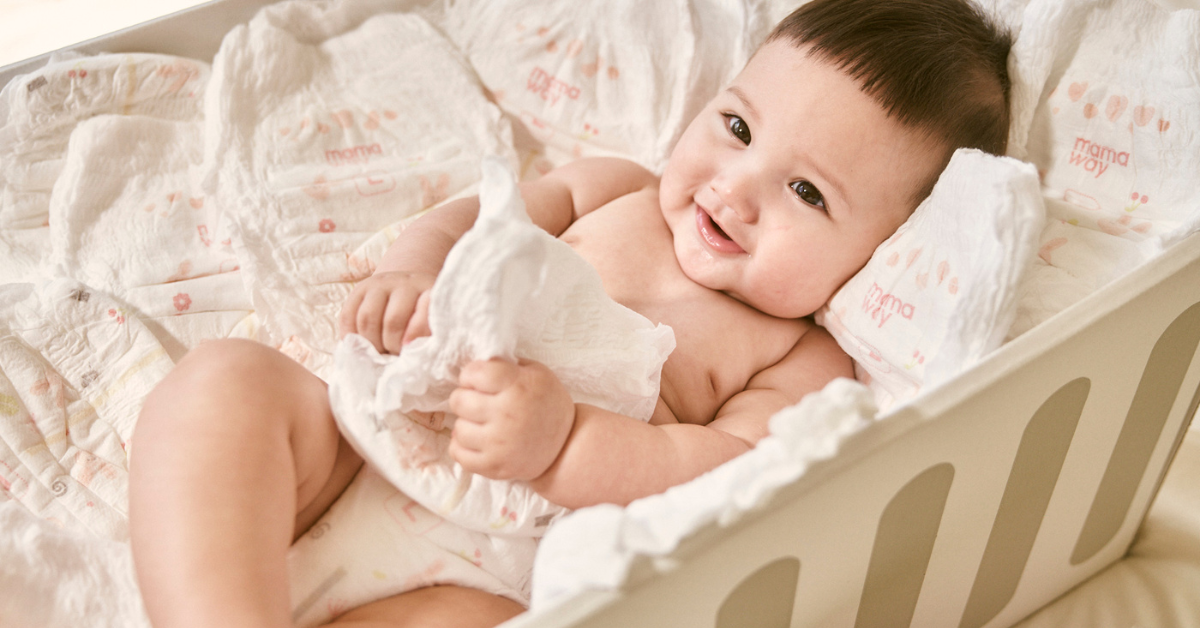
Many moms are concerned about the colour of their baby’s poop and often try to interpret its meaning. Poop colour can be a helpful indicator of a baby’s health, as it can vary significantly, especially during the first year of life. Let’s explore the various poop colours that correspond to different stages of growth.
Newborn First Poop: Meconium
A greenish-black, sticky, tarry substance resembling motor oil, composed of cells, amniotic fluid, bile, and mucus ingested in the womb. Though its appearance may seem concerning, it’s entirely normal. Over the first few days, the colour should gradually transition from black to dark green, then yellow as the baby passes out the meconium. Meconium typically has no odour, as it’s sterile.
Breastfed Baby Poop
Breastfed baby poop can exhibit variations in colour, consistency, and frequency, influenced by various factors. Here are some common expectations:
- Colour: Breastfed baby poop typically appears yellow or mustard-coloured. This hue is due to the presence of bilirubin in breast milk, a yellow pigment formed during the breakdown of red blood cells.
- Consistency: Breastfed baby poop is typically loose and watery, resembling mustard or cottage cheese in texture. This consistency is normal and indicates that the baby is receiving enough milk and staying properly hydrated.
- Frequency: Breastfed babies may poop anywhere from several times a day to once every few days. This variation is normal, as long as the baby is gaining weight and is otherwise healthy.
- Smell: Breastfed baby poop usually has a mild, slightly sweet smell that is not very strong. It is much less pungent than the poop of formula-fed babies.
- Texture: Breastfed baby poop may contain small white or yellow “seeds,” which are undigested milk fat globules. This is normal and nothing to worry about.
Overall, breastfed baby poop is generally not a cause for concern as long as the baby is healthy and growing. However, if you notice any changes in colour, consistency, frequency, or smell that are not typical for your baby, it’s always a good idea to talk to your paediatrician to rule out any potential health issues.
Formula-Fed Baby Poop
Formula-fed baby poop can vary in colour, consistency, and frequency depending on a variety of factors. Here are some common things to expect:
- Colour: Formula-fed baby poop can range in colour from yellow to brown to green. The colour may vary depending on the type of formula your baby is drinking and can change as your baby grows.
- Consistency: Formula-fed baby poop is usually firmer than breastfed baby poop, with a texture more like peanut butter. However, the consistency can vary from one baby to another.
- Frequency: Formula-fed babies may poop anywhere from several times a day to once every few days. This variation is normal, as long as the baby is gaining weight and is otherwise healthy.
- Smell: Formula-fed baby poop can have a stronger odour than breastfed baby poop. The smell can vary depending on the type of formula your baby is drinking and can change as your baby grows.
- Texture: Formula-fed baby poop may be more formed and can have small white or yellow “seeds,” which are undigested milk fat globules. This is normal and nothing to worry about.
Overall, formula-fed baby poop is generally not a cause for concern as long as the baby is healthy and growing. However, if you notice any changes in colour, consistency, frequency, or smell that are not typical for your baby, it’s always a good idea to talk to your paediatrician to rule out any potential health issues.
Partially Solid Food-Fed Baby Poop
When a baby begins eating partially solid foods, their poop can change in colour, consistency, and frequency. Here are some common things to expect:
- Colour: The colour of partially solid food-fed baby poop can vary depending on what your baby has eaten. It can be brown, green, or even orange.
- Consistency: Partially solid food-fed baby poop can be thicker than formula or breastfed baby poop. It may be more formed or have small pieces in it.
- Frequency: As your baby begins eating more solid foods, their poop frequency may change. They may poop less frequently than before or more frequently, depending on what they have eaten.
- Smell: The smell of partially solid food-fed baby poop can be stronger than breastfed baby poop, but it is not usually as strong as formula-fed baby poop.
Overall, partially solid food-fed baby poop can vary widely and is usually nothing to be concerned about as long as your baby is healthy and growing. However, if you notice any changes in colour, consistency, frequency, or smell that are not typical for your baby, it’s always a good idea to talk to your paediatrician to rule out any potential health issues.
When should you be concerned and seek medical help?
Here are the alarming signs that you need to know:
- Green Poop
It’s common for your baby’s poop to appear slightly greenish, which can result from consuming green solid food. This can happen even with breastfed babies and isn’t usually a cause for concern if your baby is gaining weight steadily. However, it may also indicate other issues such as a cold, food allergy, or treatment for jaundice. If you notice accompanying physical symptoms like skin problems, tummy upsets, or breathing issues, it’s advisable to consult your paediatrician. - Red Poop
Greenish poop in babies could be attributed to something they consumed, like tomatoes or fruit punch, or digested blood from breastfeeding with cracked nipples. However, it could also signal issues like a milk protein allergy or bleeding from the baby’s bottom. If you have any concerns, it’s best to seek professional advice. - White Poop
This is concerning for the baby’s health. It could indicate liver disease or jaundice. It’s important to seek medical help promptly. - Dry or Hard Poop
Hard poop can also result from constipation, often caused by improperly digested solid food or insufficient fluid intake. - Runny Watery Poop
This may result from infection or allergy, or it can be an indication of diarrhoea. Babies with diarrhoea may also have more frequent bowel movements than usual or have a high temperature. - Mucus Poop
Besides meconium, if mucus-textured poop appears in your baby’s diaper, it may be a sign of a bacterial infection in their intestines.
Baby poop colour can be one indicator of your baby’s health. If your baby is gaining weight and feeding as often as they need, it’s nothing to worry about. Last but not least, always consult with your paediatrician to confirm your suspicions.



Leave a Reply